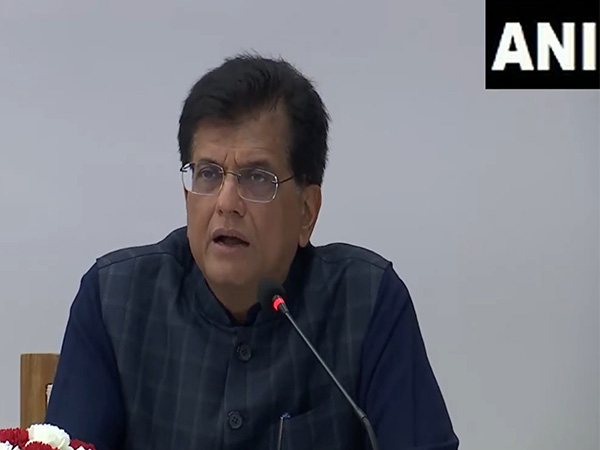1 2 3 Pune: Ready Reckoner rates are up by an average 3.9% in Maharashtra for 2025-26, the state registration department announced on Monday. The last such increase was in 2022-23 when the average RR rate was increased by 5%.
State IGR Ravindra Binwade said documents from Jan 2022 to Nov 2024 were assessed for the new rates with municipal corporation areas in the state registering the maximum hike of 5.9%. Developers feel the increase in rates would impact the sector at this point in time.

Solapur Municipal Corporation registered a 10.2% average hike in RR rates followed by Ulhasnagar at 9% and Amravati at 8%. Mumbai city's average RR rate increase is the lowest at 3.
4%. In Pune district, the average RR rate increase is 6.8%.
Nashik, Kolhapur and Chhatrapati Sambhajinagar civic areas witnessed a 7.3%, 5% and 3.5% hike in the RR rates, respectively.
"The overall transactions in rural areas have been high and the RR rates have been corrected. This year, we relied on traditional assessment methods. From next year, GIS mapping technology will be used for a more scientific approach," Bhinwade said.
Though initial discussions had suggested a 10% hike, the final revision remained lower, varying by region. Rural areas saw an average hike of 3.7%, influential areas 3.
3%, nagar parishads 5%, and municipal corporations 6% (excluding Mumbai). Developers and real estate industry representatives expressed concerns over the hike, especially in the backdrop of rising construction costs and the recently introduced 1% Metro cess on stamp duty. They argued that the increase would adversely affect property sales and development costs.
Shantilal Kataria, a governing council member of Credai, criticised the traditional assessment method used in the revision. "A scientific and data-driven approach is necessary. While the average increase appears moderate, rural areas undergoing rapid development may witness steep hikes, impacting planned township and infrastructure projects," he said.
Abhay Kele, vice-president of Pune NARDECO, shared similar views. "Despite achieving its revenue targets, the state govt opted for an unnecessary hike. This will significantly impact affordable housing, as many projects are on the outskirts where RR rates have surged," he said.
Homebuyers are also feeling the pinch. Ramesh Prabhu, a consumer rights advocate, pointed out that the Metro cess combined with the RR rate hike could dampen property transactions. A prospective buyer from Pune, considering investment in Mhalunge, said, "The upfront costs are now too high.
With a new job and limited loan amount, I may have to postpone my plan." RR rates, determined on an annual basis by govt, serve as the benchmark property value for stamp duty and registration fee calculations. Buyers must pay the higher of either the RR rate or the actual transaction value.
For the financial year 2024-25, Maharashtra's property revenue collection reached Rs 57,422 crore, surpassing the target of Rs 55,000 crore, with 29.12 lakh documents registered. "By March 30, we achieved 105% of our revenue collection target," Binwade said.
Pune: Ready Reckoner rates are up by an average 3.9% in Maharashtra for 2025-26, the state registration department announced on Monday. The last such increase was in 2022-23 when the average RR rate was increased by 5%.
State IGR Ravindra Binwade said documents from Jan 2022 to Nov 2024 were assessed for the new rates with municipal corporation areas in the state registering the maximum hike of 5.9%. Developers feel the increase in rates would impact the sector at this point in time.
Solapur Municipal Corporation registered a 10.2% average hike in RR rates followed by Ulhasnagar at 9% and Amravati at 8%. Mumbai city's average RR rate increase is the lowest at 3.
4%. In Pune district, the average RR rate increase is 6.8%.
Nashik, Kolhapur and Chhatrapati Sambhajinagar civic areas witnessed a 7.3%, 5% and 3.5% hike in the RR rates, respectively.
"The overall transactions in rural areas have been high and the RR rates have been corrected. This year, we relied on traditional assessment methods. From next year, GIS mapping technology will be used for a more scientific approach," Bhinwade said.
Though initial discussions had suggested a 10% hike, the final revision remained lower, varying by region. Rural areas saw an average hike of 3.7%, influential areas 3.
3%, nagar parishads 5%, and municipal corporations 6% (excluding Mumbai). Developers and real estate industry representatives expressed concerns over the hike, especially in the backdrop of rising construction costs and the recently introduced 1% Metro cess on stamp duty. They argued that the increase would adversely affect property sales and development costs.
Shantilal Kataria, a governing council member of Credai, criticised the traditional assessment method used in the revision. "A scientific and data-driven approach is necessary. While the average increase appears moderate, rural areas undergoing rapid development may witness steep hikes, impacting planned township and infrastructure projects," he said.
Abhay Kele, vice-president of Pune NARDECO, shared similar views. "Despite achieving its revenue targets, the state govt opted for an unnecessary hike. This will significantly impact affordable housing, as many projects are on the outskirts where RR rates have surged," he said.
Homebuyers are also feeling the pinch. Ramesh Prabhu, a consumer rights advocate, pointed out that the Metro cess combined with the RR rate hike could dampen property transactions. A prospective buyer from Pune, considering investment in Mhalunge, said, "The upfront costs are now too high.
With a new job and limited loan amount, I may have to postpone my plan." RR rates, determined on an annual basis by govt, serve as the benchmark property value for stamp duty and registration fee calculations. Buyers must pay the higher of either the RR rate or the actual transaction value.
For the financial year 2024-25, Maharashtra's property revenue collection reached Rs 57,422 crore, surpassing the target of Rs 55,000 crore, with 29.12 lakh documents registered. "By March 30, we achieved 105% of our revenue collection target," Binwade said.
Get the latest lifestyle updates on Times of India, along with EID Wishes , Messages and quotes !.
















